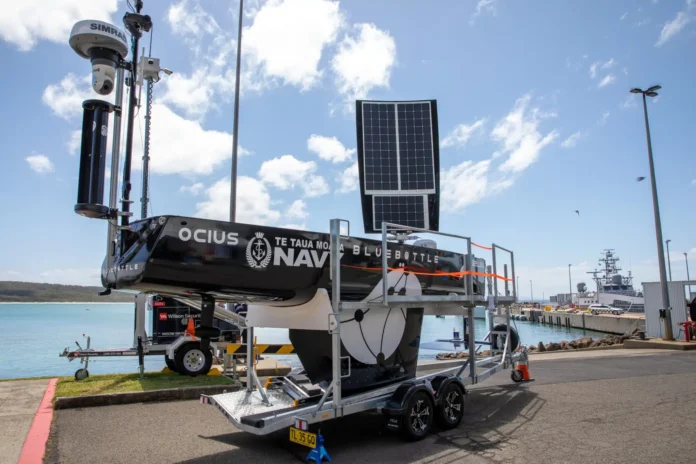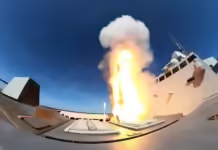
The AUKUS partners – Australia, the United States and the United Kingdom – are eyeing the creation of an “AUKUS” Common Control System for uncrewed systems as part of AUKUS Pillar II, Naval News reports. While the goal is still some way away, efforts continued towards the goal during Exercises Autonomous Warrior 2023 (AW23) and Integrated Battle Problem 23.3 (IBP 23.3) off the Australian Coast this month.
Common Control Systems integrate diverse uncrewed airborne, surface and subsurface systems into a single command and control (C2) environment. However, they’re more than just software packages and include a variety of regulatory and technical standards for both uncrewed systems and operator consoles.
Towards an AUKUS Common Control System
The Royal Australian Navy (RAN) is currently experimenting with a Common Control System that is being developed by the Defence Science and Technology Group (DSTG). During Exercise Autonomous Warrior 2022 (AW22), the U.S. Navy (USN) trialled their generically named CCS, while the Royal Navy (RN) trialled QUASAR/MAPLE.
According to Commodore Darron Kavanagh, Director-General Warfare Innovation Navy (WIN), during AW23 the AUKUS partners demonstrated the ability for underway uncrewed vessels to swap between Australian, U.S. and U.K Common Control Systems. This, he told Naval News during an exclusive interview on the sidelines of Indo Pacific 2023, was a “natural extension” of existing uncrewed collaboration under AUKUS.
Asked if collaboration between the AUKUS countries would eventually see the creation of an AUKUS wide Common Control System, CDRE Kavanagh said that it was something that the AUKUS partners were “moving towards” as part of their existing collaboration. He also said that such a system would fuse the best elements of the existing Australian, American and British systems.
An ASW Focused Autonomous Warrior
This year’s iteration of Autonomous Warrior focused heavily on leveraging crewed-uncrewed teaming in support of the Anti-Submarine Warfare (ASW) mission. According to CDRE Kavanagh, Ocius Bluebottles, C2 Robotics Speartooths, and the vessels of USN Unmanned Surface Division One (USVDIV-1) were standout performers.
In one part of the exercise the Bluebottles, equipped with Thales Australia’s Blue Sentry thin-line towed array sonars, worked with USVDIV-1 vessels to track and isolate a Saab AUV62 submarine simulator. In collaboration with a C2 Robotics Sabertooth, they then cued RAN MH-60R Romeo helicopters which further prosecuted the contact. All-in-all, CDRE Kavanagh said, working together the systems were “super capable” in the ASW role.
This success, he explained, occurred even without a shared Common Control System. Instead, throughout the exercise, the partners practised “handing off” control of the various uncrewed systems to the three Common Control Systems on show during AW23. This included all three nations demonstrating their ability to control the RAN’s new Ocius Bluebottle Uncrewed Surface Vessels (USV).
During AW23 the New Zealand Defence Force (NZDF) also showcased a Bluebottle in Royal New Zealand Navy colours. In response to questions about the USV, a NZDF spokesperson said that the RNZN is “currently considering” whether to trial the system and that Naval News should expect an announcement to that effect before Christmas.



